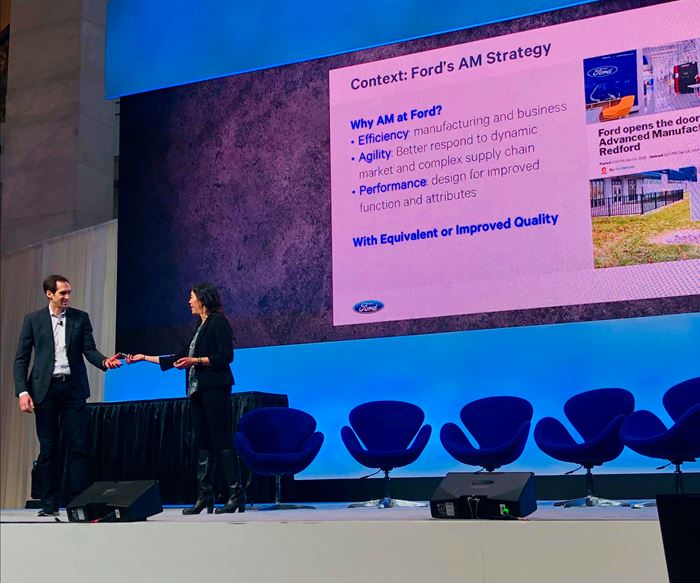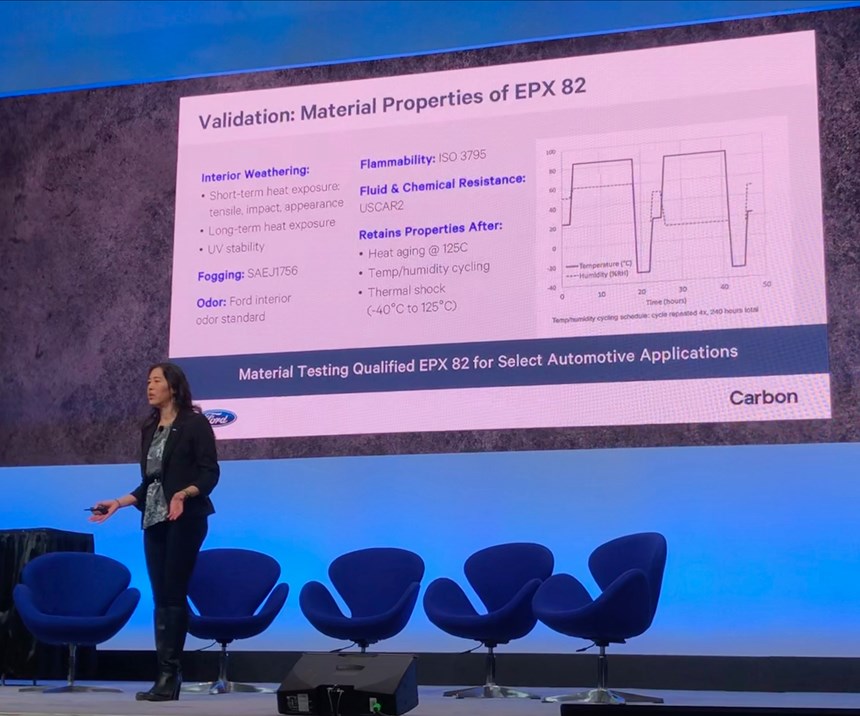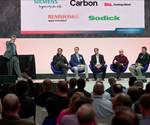Ford in Production with On-Demand AM Polymer Parts
Ford and Carbon presented the first digitally manufactured polymer parts in production for the Ford Motor Company, created with Carbon’s digital light synthesis technology.
In case you missed it, the very first presentation of the inaugural Additive Manufacturing Workshop for Automotive (AMWA) broke actual news. The event, which took place at this year’s North American International Auto Show (NAIAS) in Detroit on January 16, kicked off with a presentation by Ellen Lee, Ph.D., Additive Manufacturing Technical Leader, Ford Motor Company, and Paul Dilaura, Vice President, Enterprise Partnerships, Carbon. The two showcased the first digitally manufactured polymer parts in production for the Ford Motor Company, including a Ford Focus HVAC lever arm (a service component for older models), heavy-duty truck auxiliary plugs (a niche market part) and electric parking brake brackets.
The parts, created with Carbon’s digital light synthesis technology using a Ford-qualified epoxy material, exceeded rigorous performance testing and critical requirements such as interior weathering, short- and long-term heat exposures, UV stability, fluid and chemical resistance, flammability and fogging.
Lee and DiLaura’s presentation includes in-depth explanations of the production process for the additively produced parts, including ancillary benefits regarding the elimination of inventory and warehouse requirements, drastically reduced lead times and minimum order quantities. The two presenters give detailed explanations about additive processes for parts being printed for vehicles ranging from the Mustang GT500 to the Ford F-150 Raptor. To watch the entire presentation—for free—simply register here.
Related Content
-
What Does Additive Manufacturing Readiness Look Like?
The promise of distributed manufacturing is alluring, but to get there AM first needs to master scale production. GKN Additive’s Michigan facility illustrates what the journey might look like.
-
3D Printed Cutting Tool for Large Transmission Part: The Cool Parts Show Bonus
A boring tool that was once 30 kg challenged the performance of the machining center using it. The replacement tool is 11.5 kg, and more efficient as well, thanks to generative design.
-
Video: AM for Harder, Longer-Lasting Brake Discs
Additive manufacturing is being applied to limit automotive brake dust. For a major automaker, Etxetar and Talens are developing a production-speed directed energy deposition system to give brake discs a precise layer of wear-resistant carbide.














